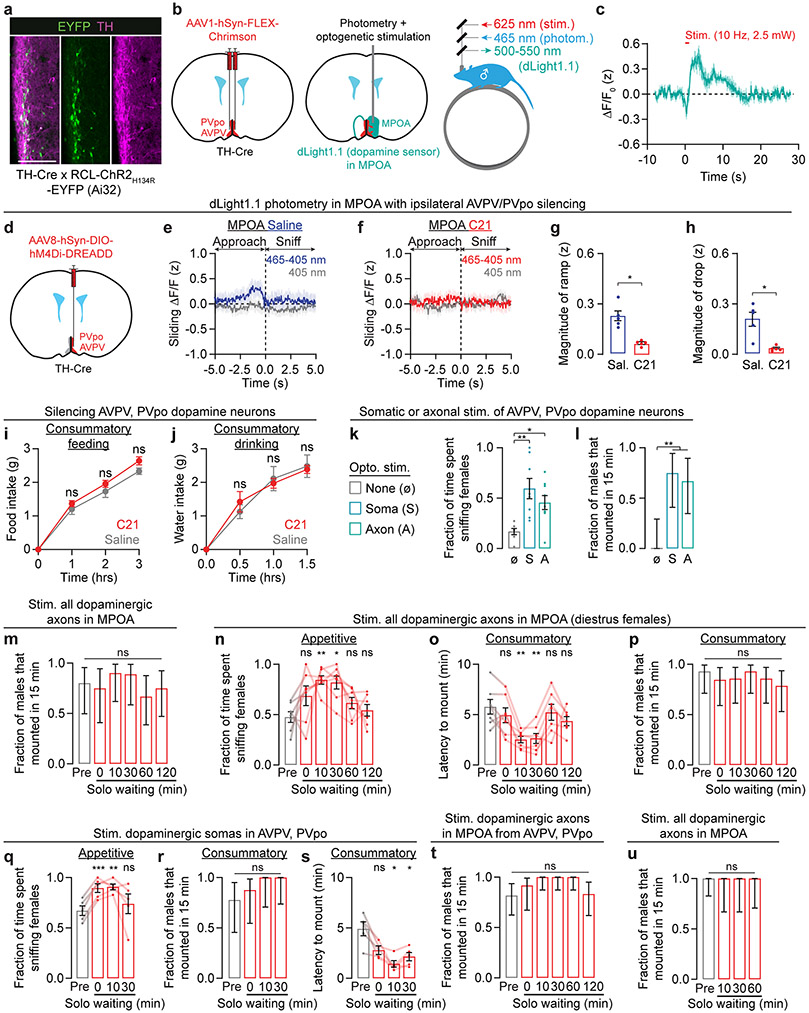Extended Data Fig. 5 ∣. AVPV/PVpo TH-Cre+ neurons release dopamine in the MPOA and promote mating behaviors.
a, Co-localization of TH-Cre+ cells (i.e., expressing EYFP) in the AVPV/PVpo with TH staining. Both EYFP and TH proteins were visualized with antibody staining. Scale bar: 200 μm.
b,c, Optogenetic stimulation of TH-Cre+ AVPV/PVpo axonal projections to the MPOA in awake, head-fixed males triggers robust local dopamine release that can be measured with the dopamine sensor dLight1.1 (n = 5 males). Note that the mean amplitude of the optogenetically evoked dLight1.1 transient is similar to the magnitude of transients evoked by female approach behaviors in Fig. 2b-c.
d-h, Unilateral chemogenetic inhibition of AVPV/PVpo dopamine (d) neurons largely suppressed the ramp and drop of dopamine (surrounding sniffs) in the MPOA after injecting the agonist C21 (f) but not saline (e). Quantifications are shown in panels g and h, which use the same definitions of ramping and dropping as Extended Data Fig. 2j (n = 5 males).
i,j, Bilateral chemogenetic inhibition of male AVPV/PVpo dopamine neurons did not suppress ingestive behaviors (n = 10 males).
k,l, Optogenetic stimulation of AVPV/PVpo dopamine neuron cell bodies (‘Soma’) or axons in the MPOA reinvigorates both appetitive sniffing (k: n = 7, 9, 9 males) and consummatory mounting behaviors (l: n = 7, 9, 9, mean ± 95% c.i.) in sexually sated mice.
m, Optogenetic pre-stimulation of all dopamine axons in the MPOA (in TH-Cre males) did not further increase the fraction of males that mount in the first 15 minutes after introduction of the female, as this fraction was already near ceiling in the absence of stimulation (n = 10, 8, 10, 9, 12, 12 trials from 7 males, mean ± 95% c.i.).
n-p, Optogenetic pre-stimulation of all dopamine axons in the MPOA led to a sustained increase in male appetitive sniffing behavior towards diestrus females (n: n = 6 males) and a decrease in the latency to onset of the consummatory mounting behavior (o: n = 6 males) at 10 min and 30 min after the stimulation. This stimulation did not further increase the fraction of males that mount in the first 15 minutes after introduction of the female, as this fraction was already near ceiling in the absence of stimulation (p: n = 13, 14, 14, 14, 14, 14 trials from 6 males, mean ± 95% c.i.).
q-s, Brief optogenetic pre-stimulation of dopaminergic somas in the AVPV/PVpo led to a sustained increase in male appetitive sniffing behavior (q: n = 6 males) and a decrease in the latency to onset of the consummatory mounting behavior (r: n = 6 males). This stimulation did not further increase the fraction of males that mount in the first 15 minutes after introduction of the female, as this fraction was already near ceiling in the absence of stimulation (s: n = 9, 8, 7, 8 trials from 6 males, mean ± 95% c.i.).
t, Brief optogenetic pre-stimulation of AVPV/PVpo dopamine axons in the MPOA did not further increase the fraction of males that mount in the first 15 minutes after introduction of the female, as this fraction was already near ceiling in the absence of stimulation (n = 22, 12, 18, 18, 18, 18 trials from 6 males, mean ± 95% c.i.).
u, Female priming followed by pre-stimulation of all dopamine axons in the MPOA did not further increase the fraction of males that mount in the first 15 minutes after introduction of the female, as this fraction was already near ceiling in the absence of stimulation (n = 10, 7, 7, 8 trials from 5 males, mean ± 95% c.i.). Mean ± s.e.m. unless otherwise specified. *p<0.05, **p<0.01, ***p<0.001. See Supplementary Table 1 for statistics.

